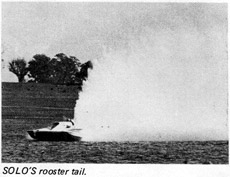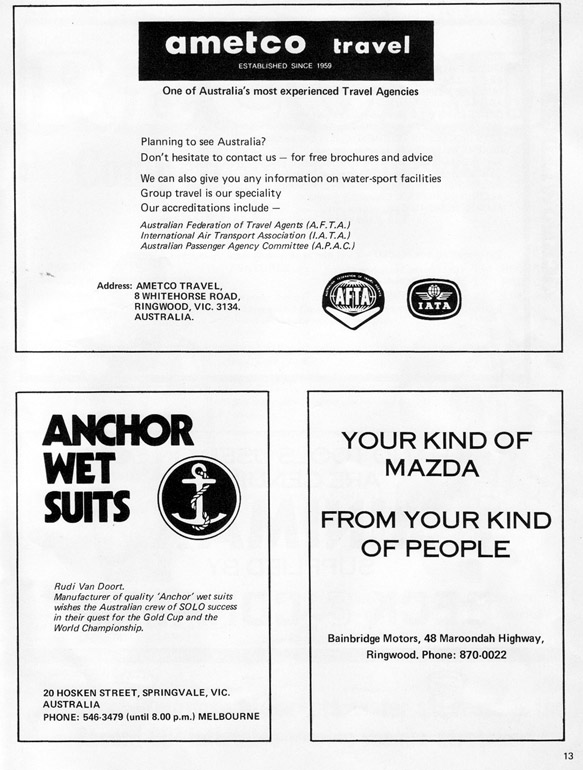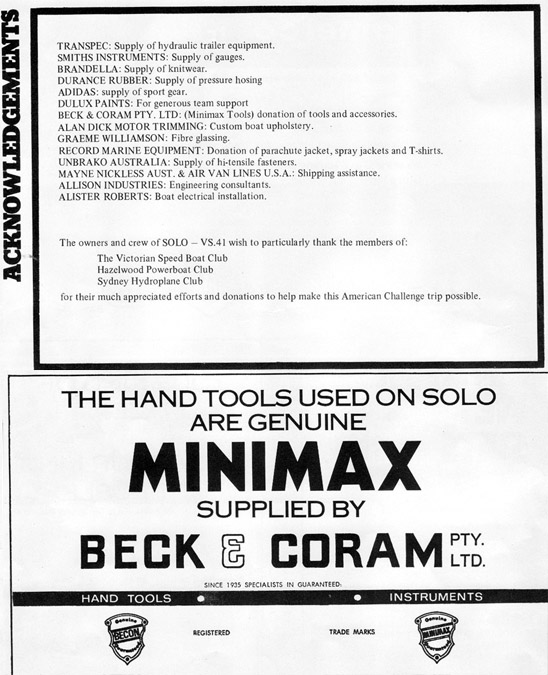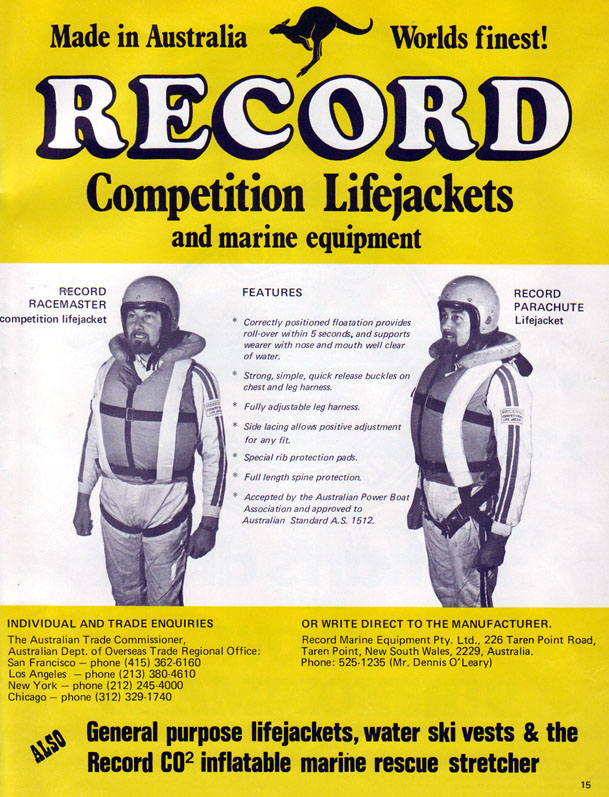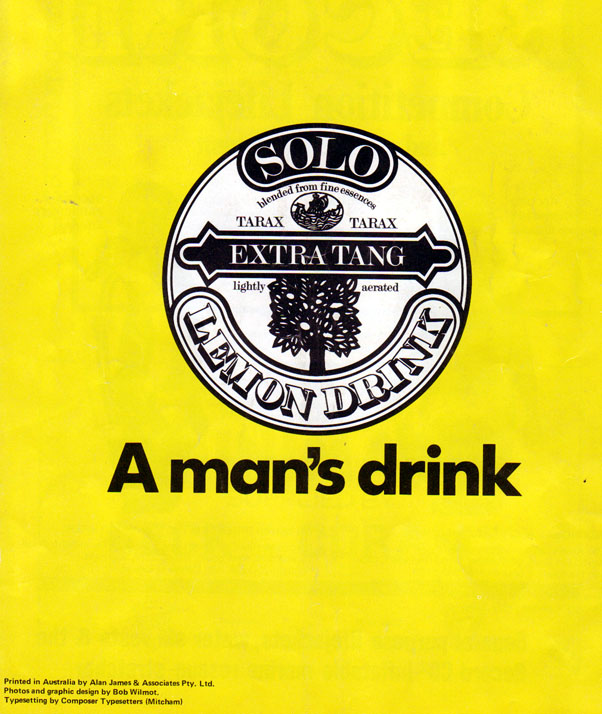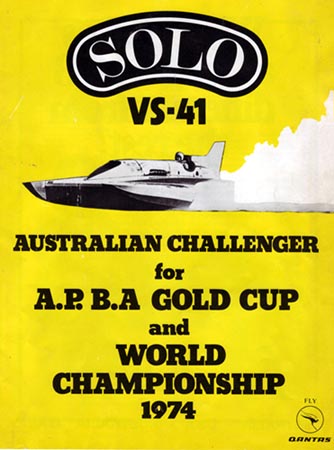
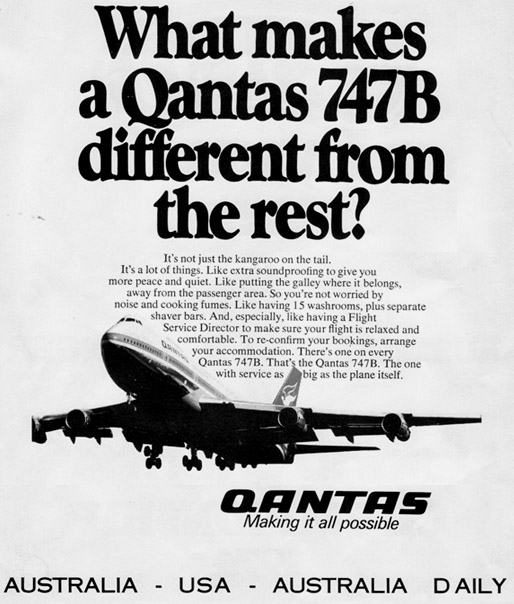
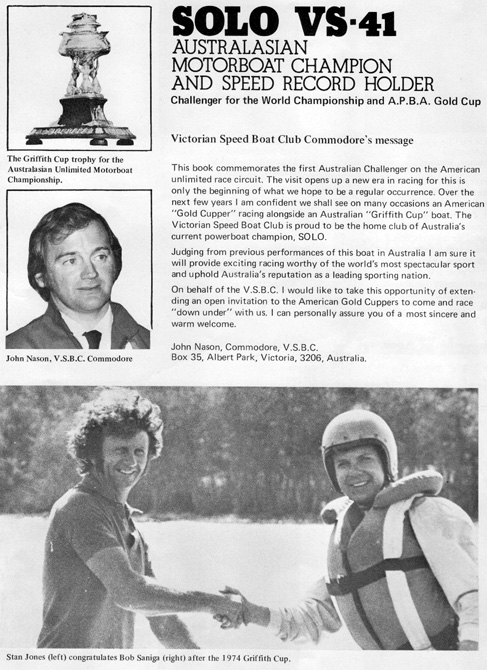
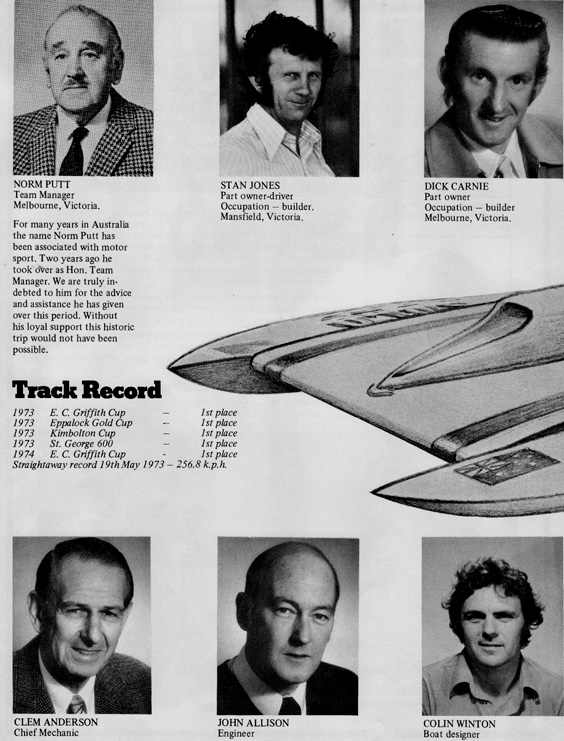
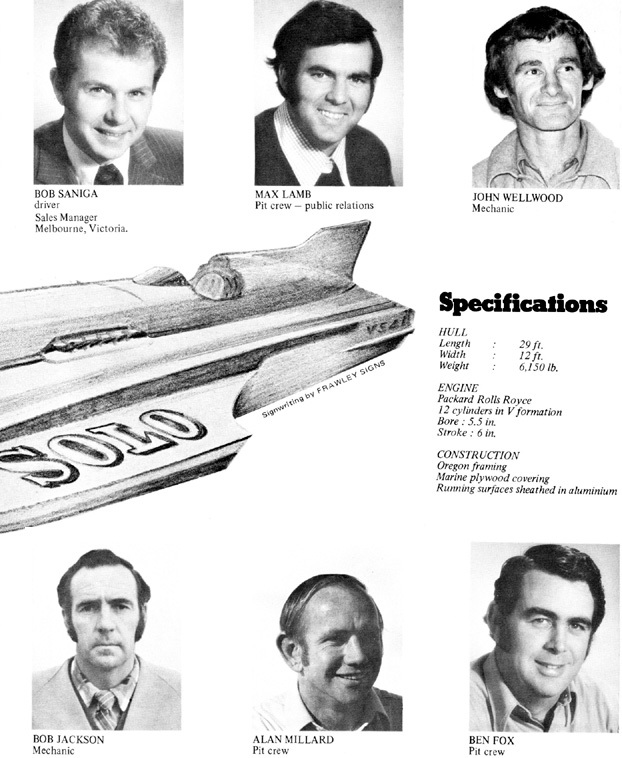
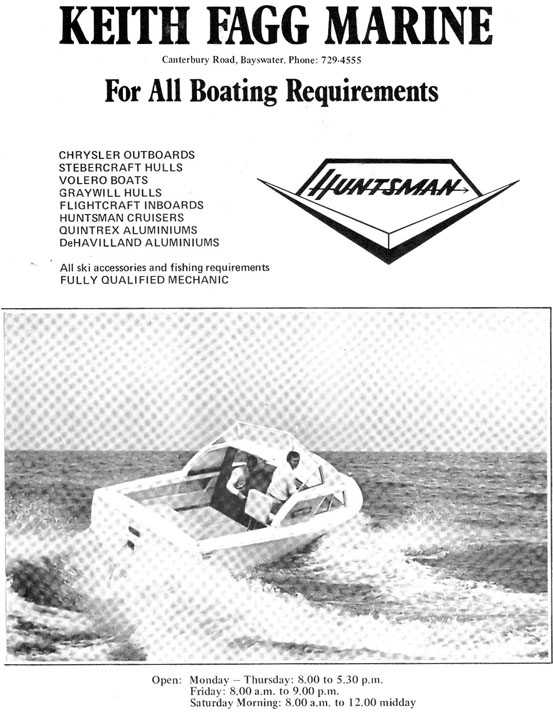
The British propeller driven speed record is somewhere about 120 mph - that of Australasian, set by VS4I when she carried the name Stampede is nearly 160 mph!
Yet speedboating is the forgotten sport in Australia - having reasonable strength in only one state Victoria, capital city Melbourne.
Thus, it is fitting, that Victoria should provide the boat and the crew to take on the top boats in the world for the Gold Cup and world championship.
I first saw Stampede (the original) in 1966 when I attended a race meeting at Lake Illawarra.
At the water's edge was a monstrous, mufti-coloured shape belching fire and smoke as its crew tried to get it to fire and keep firing. The engine had 12 exhaust pipes and alongside other more docile hydros it looked big and heavy.
Stampede didn't fire that day - she stayed on the bank while Ern Nunn and Wasp battled with Arthur Baker in Assassin.
Months later I heard that Stampede had been sold to Stan Jones who was building up a team to campaign the big boat. There were many who said, "Great - if he can get the engine going".
Stan knew what he was doing. The 41-year-old builder front Vermont had raced boats for many years. After several years driving displacement craft he tried hydroplanes. Hot Cookie was Jones' first three-pointer and with her he made his first try at a Griffith Cup. Racing against Spencer Miller, Ern Nunn, Keith Hooper and Alan Fordham, Jones was holding his own in a dice to the buoy when Hot Cookie flipped and sank taking Jones with her. He surfaced water logged but unhurt and in 1967 joined forces with Bob Saniga to buy Stampede.
Frustration - the big boat went no better for them than it had for previous owners. The Col Winton designed hydro looked as if it could be fast - if anyone would get that incredible engine to fire and keep firing.
One-time RAAF mechanic Clem Anderson was the answer. A top wrenchnrut on Hurricanes and Spitfires in the Second World War. Clem knew how to make the big motors go.
The day before the 1970 E. C. Griffith Cup, he got the motor going well for the first time. The boat was running - at last.
The 1970 Griffith Cup could have been classed as an offshore race. Lake Eppalock whipped to a froth and some of the really quick - and wise - drivers, took one look and stayed ashore.
The Stampede gang did not. Here, in rough water COULD be their chance. Stampede won that race at one of the slowest average speeds recorded since the Second World War - she won it but there were still doubters.
"How would it have been if the water was good - what would have happened if Jo Blo hadn't sunk and if Ern Nunn had brought Wasp out?" They asked these questions and left the answer hanging.
Stampede went on to win everything worth having that season and kept the pressure on to win the 1971 Griffith Cup.
Then the Golden Hours ended. Dave Tenny's mighty Gold Cupper Aggressor arrived on the racing scene. Aggressor had been under construction for more than 10 years and was everything the old Stampede was not. She was immaculate and beautifully painted and she used an engine of the same kind as did Stampede.
In the 1972 Griffith Cup Aggressor beat Stampede after a great battle which badly weakened the framework of the older boat.
Jones turned his back on the game - temporarily. He commissioned Col Winton to design and help build a newer and bigger Stampede to take on Aggressor and also to take on the best of overseas boats - if any ever came to our shores.
The new boat, all 28 ft. of her was fired up only four days before the 1973 Griffith Cup. It was a race with not only the cup at stake but local speedboat prestige as a New Zealand boat, Air New Zealand was in Victoria to do battle.
At first glance comparisons seemed absurd. Air New Zealand (see picture below) was less than 20 ft. long, powered by a 348 ci. engine and weighed less than one third of the weight of Stampede. But she was beautifully prepared, held the Australasian speed record with 151 m.p.h. and was no push-over - for anything.
Stampede won that race from Air New Zealand by only a few lengths after the smaller boat had brilliantly pushed the giant to the limit all the way.
With the Griffith Cup safely away in Victoria for another year, Stampede was then prepared for speed record work. First she beat Air New Zealand's record, pushing the speed to a "modest" 159 mph then her crew, not happy with the result, tried once more.
Onlookers told how the big boat, with Bob Saniga at the wheel, hammered into the measured kilo then it seemed as if all hell broke loose.
At the end of the run Stampede hooked to the right at more than 150 m.p.h. Saniga rode the bucking hull, then was hurled straight out and up as the boat began to break up.
As Saniga went skywards. Stampede stood on her tail, still at speed, then collapsed in a shattered mess and sank.
Saniga was floating in his Record racing lifejacket when rescue boats arrived. He was conscious and swimming on his back but his arm hurt. He had a dislocated shoulder and bruising from a smash of the kind that has killed other drivers.
The Stampede team were shattered along with their $30,000 boat. Plans had been made to compete in the USA bookings had been made but now they had no boat! It was back to the drawing-board for Stan
Cont. page 10
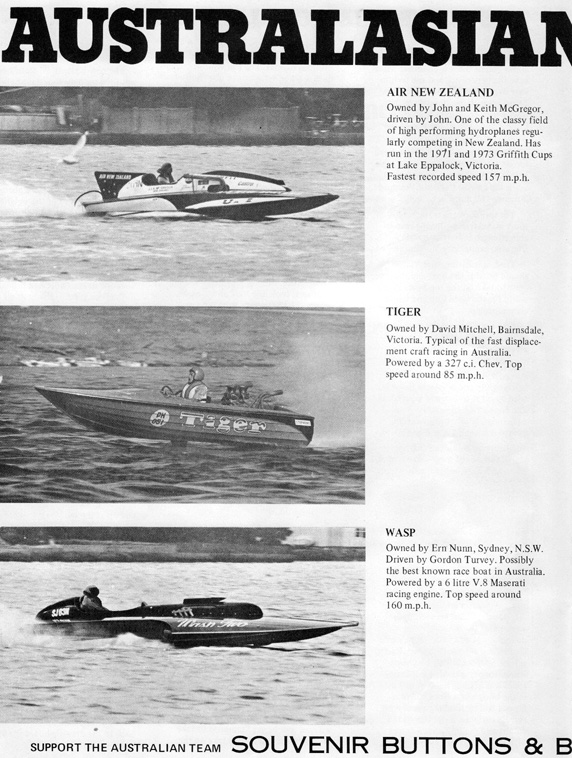
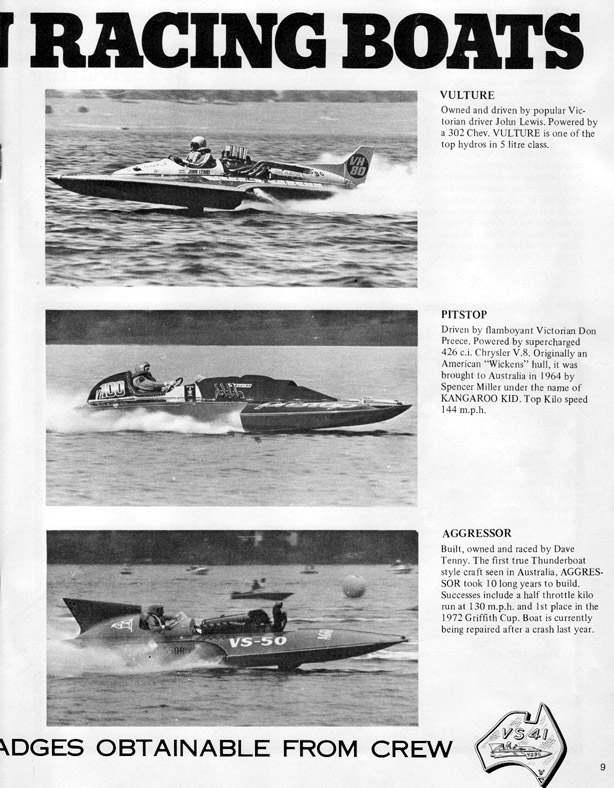
Jones, Dick Carnie, Bob Saniga and Clem Anderson.
The next year was almost a duplicate of the previous one.
In 1973 Stampede had appeared almost at the nick of time to beat Air New Zealand; in 1974 the rebuilt boat, with some basic modifications, once more at the last moment came to the starter's hands in the Griffith Cup.
Now there was no New Zealand boat to beat but a revitalised Wasp Two driven by Gordon Turvey from New South Wales determined that this would be THE year.
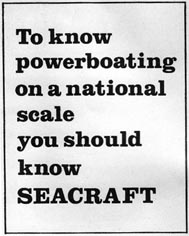
Wasp Two nearly upset the sponsor-search. For several laps she had the favourite pegged and Bob Saniga appeared to be unable to get the valued inside running - then after the last buoy, Saniga got the opening he needed and opened the mighty Merlin out - that was the end!
Another Griffith Cup was over and with the race once more in Victorian hands, the crew got on with their trip to the USA.
Good luck fellers - keep in and at 'em and show them that we might not be able to win the America's Cup - but there are others not so well nailed down.
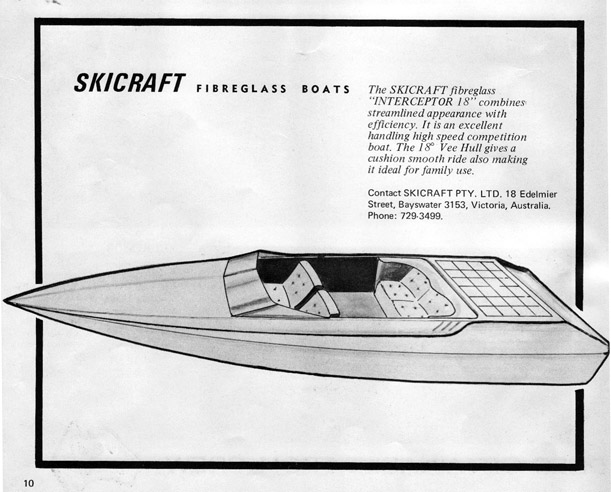
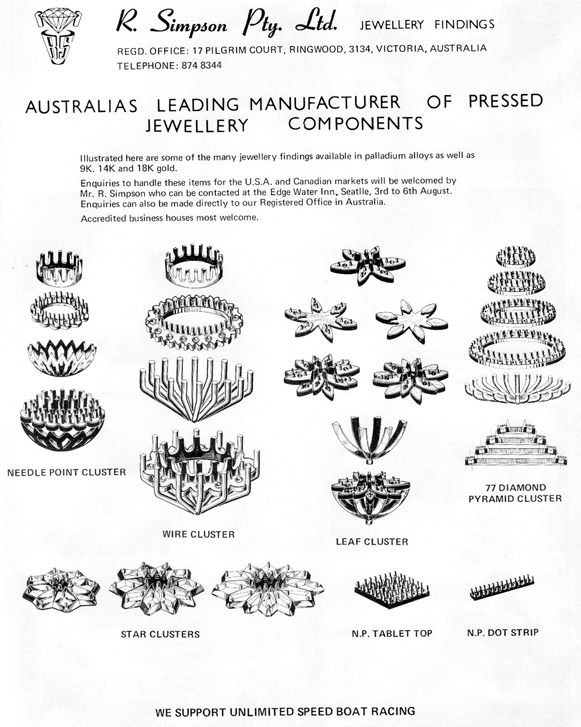
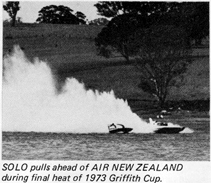 |
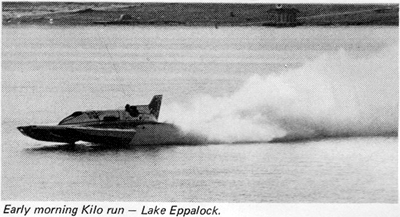 |
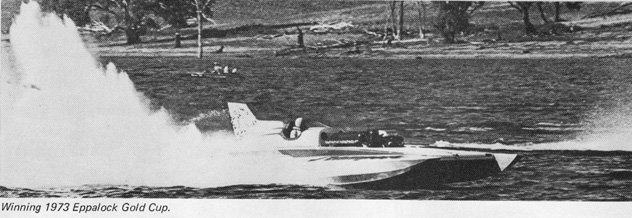 |
|
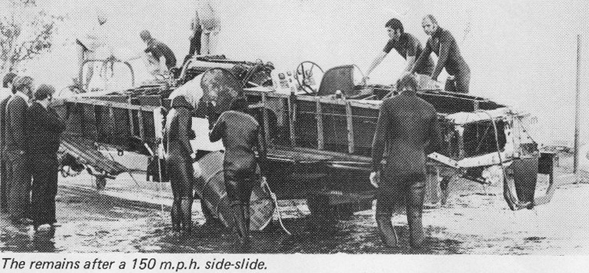 |
|
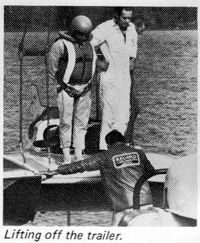 |
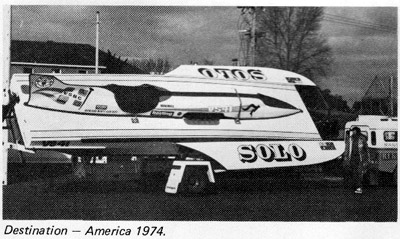 |
